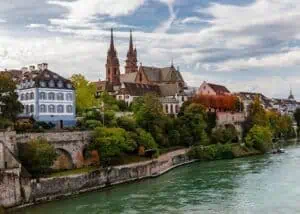- Spain
Barcelona
Barcelona, the cosmopolitan capital of the Spanish region of Catalonia, is famous for its art and architecture. The imposing Sagrada Família church and other landmarks of modernism by the hand of artist Antoni Gaudí are to be found throughout the city. The Picasso Museum and the Fundació Joan Miró display modern works of art by their namesakes while, the Museum of City History (MUHBA) also includes several archaeological sites from Roman times.
Canary Islands
Spanish Autonomous Community
The Canary Islands are a Spanish archipelago of volcanic origin off the northwest coast of Africa, known for their black and white sandy beaches. The landscape of the largest island, Tenerife, is dominated by the Pico del Teide, which boasts snow in wintertime. On the active volcano, part of the national park of the same name, the island built in its very own observatory.. In Tenerife’s capital Santa Cruz de Tenerife, a festivecarnival takes place every year before the beginning of Lent.
- Turkey
Istanbul
City in Turkey
Istanbul is an important Turkish city on the Bosporus, located at the interface between Europe and Asia. The old town reflects the cultural influences of numerous empires that have ruled over the city over time. The Roman open-air hippodrome in the Sultanahmet district was used for chariot races for several centuries. Egyptian obelisks are also still preserved. The famous Byzantine Hagia Sophia has a high dome from the 6th century and rare Christian mosaics.
Fethiye
County seat in Turkey
Fethiye is a port city on the Turkish Riviera in the southwest of the country. The county has the same name. Fethiye is famous for its natural harbour, the turquoise sea and for numerous rock tombs carved into the rock walls above the town – including the tomb of Amyntas from the 4th century BC. The islands near the coast are a popular destination for day trips by boat. To the south is Ölüdeniz beach, protected by a lagoon, and the Butterfly Valley, an official nature reserve.
- Greece
Crete
Island in Greece
Crete, the largest island in Greece, is known for its diverse landscape, which ranges from the fine sandy beach of Elafonisi to the White Mountains. The Ida Mountains are the highest mountain range on the island. Here you will find the Idaic Grotto, which according to Greek mythology was the birthplace of Zeus. In the capital Heraklion there is the renowned Archaeological Museum with Minoan artifacts, and Knossos, a settlement from the Bronze Age.
Santorini
A dream in blue and white – that is Greece and above all Santorini. Here, where the cities are built into the rocky coastline and winding alleys stretch up the mountains, you arrive in a dream of tzatziki and ouzo. The sickle shape of the island was created by a volcanic eruption in the 16th century. Since then, the whitewashed little houses look down from the steep slopes to the round of the former crater with pristine views out to a milky blue sea.




